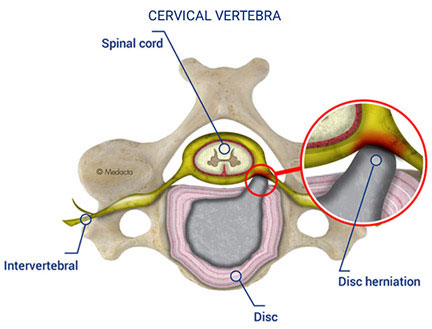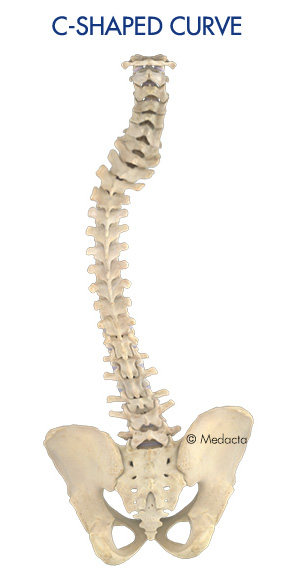When one or more of the discs are damaged over time due to injury, trauma, or natural aging of the spine, part of the gel-like center of the disc leaks (“herniates”) into the gap between the vertebrae where the nerves and spinal cord are located.
A herniation, loss of disc height, or slippage of one vertebra over another can reduce the amount of room for nerves and the spinal cord to pass. For some people, there are no symptoms associated with this condition, but others feel pain, numbness, or a tingling sensation in their neck and/or extremities.


Everyone’s spine has natural curves. Seen from the back of your body, scoliosis is an abnormal rotation and a lateral “S” or “C” shaped curvature in the normally straight vertical line. Patients with scoliosis could have curves that look more like a “C” (one curve) or an “S” (two curves). Depending on the age of the patient, scoliosis can be Pediatric Scoliosis or Adult Scoliosis


Both pediatric scoliosis and Adolescent Idiopathic Scoliosis, have causes that are unknown. There is ongoing research to understand the potential causes including genetics, soft tissue disorders and abnormalities in the central nervous system. You can’t cause scoliosis; it does not come from carrying heavy backpacks, participating vigorously in sports, or poor posture. Adult scoliosis is an entirely different condition. The most common causes include a continuation of adolescent idiopathic scoliosis degeneration of the discs, or arthritis of the facet joints which collapse and cause wedging of the disc spaces. In the elderly, the incidence can be as high as 68.6%.
In children and teens, scoliosis typically does not have symptoms and is not obvious until the curve of the spine becomes moderate or severe.
Adult patients may have a variety of symptoms, which can lead to gradual loss of function:
Low back pain and stiffness are the 2 most common symptoms[2]
Numbness, cramping, and shooting pain in the legs due to pinched nerves
Loss of spinal balance which can cause muscle fatigue
Shortness of breath and chest pain with very severe scoliosis